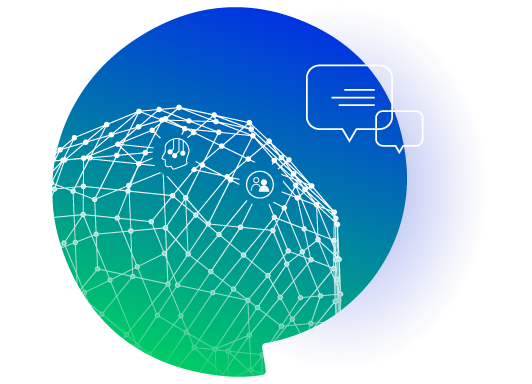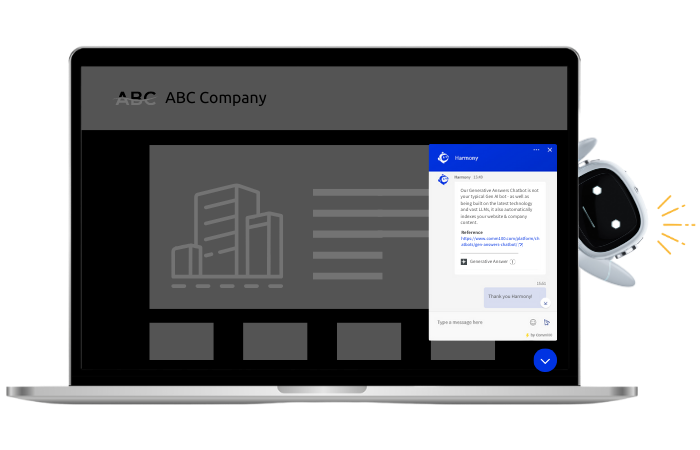In this day and age, all companies who want to get an edge over the competition must embrace customer experience continuous improvement as a strategy to ensure their customers receive great customer experiences.
Why? Well, the customer experience is a key ingredient to getting new business and maintaining customer loyalty. But delivering excellent customer experiences isn’t something that you can measure one time and not look to improve. The reason for this is that customer expectations are constantly rising – and what’s seen as exceptional service today, may not be the exceptional service of tomorrow. Businesses need to keep innovating and improving their service, or risk being left behind.
For all businesses then, it’s essential to establish a continuous improvement process that will constantly improve the customer experience, helping to keep your customers delighted with your service, and helping to boost loyalty.
To help you to do this, we’ve created a customer experience improvement strategy based on the Deming Cycle, a continuous improvement framework based on Six Sigma methodology. This cycle can be adapted to all situations where improvement is required, and advocates for an established process for these situations:
- Plan your change
- Do the change
- Study, or check the results of the change
- Act to improve the change further
Here are our steps you can use to build a management process which closes the loop and acts on customer feedback, all the while improving experiences for your customers.
Customer Service Industry Trends 2024
Discover the most impactful & lasting industry trends in 2024 and beyond.
Explore the trends
Report
Gathering Insight
This is an overlooked factor in creating a great customer experience which most companies take lightly, or don’t often do at all.
While it might seem odd to launch a customer experience improvement project without hearing from your customers exactly what’s critical to be improved, many companies fall into the trap of assuming they know what their customers want, without actually asking them. But customers are the best information source available to any company and should be your first port of call when identifying what needs to be improved.
Companies should put in place some methods of getting feedback from customers, ideally covering both qualitative and quantitative outputs which can then be measured against at the completion of the change project. This can be done using surveys, questionnaires and focus groups, for example. Customers can also provide meaningful information during interactions with your agents, and this kind of feedback should not be ignored. Ensure you provide enough of a feedback loop flowing from agents to management to capture and act upon this feedback.
Identifying Goals
Once you have a pool of feedback, you should start to see areas where you can make changes. Identifying clear goals for each potential change helps you not just to ensure clarity in what exactly needs to be changed, it also allows you to start assessing how you can measure the impact of those changes.
It’s essential to build SMART goals here, to allow you to clearly manage your continuous improvement efforts, and ensure your entire team can understand exactly which changes need to be made. Prioritization of potential customer experience improvements is also important. It might be that you decide to improve areas first that are important or have a large potential impact. Alternatively, you might want to pick some small changes to push through your improvement process first, so you can notch up some “quick wins”, and improve on the process as you move to making bigger changes.
Read more: How to Set Goals & Build a Strategy to Drive Customer Experience Improvement
Planning the Next Steps
Once a specific area for improvement has been identified, it’s crucial to get all the relevant teams and groups aligned and on the same page. Internal “customer advocates” should be polled for opinions, but it’s essential that the teams working on the solution(s) have a clear idea of the overall direction of the change. This knowledge is critical in ensuring that the change project meets your goals, but is also a requirement in ensuring that the project remains in budget and scope.
Customer advocates should be involved throughout the process to ensure that the solution addresses the problems identified and is something that the customer will use. In addition, they can represent the voice of the customer in ensuring that the changes are delivered in a timely and appropriate manner.
Do
The second phase in the Deming cycle (Plan > Do > Check > Act) is the actual “doing” or implementing of the project. If you’ve got all parts of the business (from front line employee to Senior Management) aware of the reasons and rationale for the project as well as the projected benefits, this is an easy step.
If you do not have that buy-in, approvals for budgeting and actual implementation might be difficult to obtain, so ideally you should involve key stakeholders early and often. At the front line, ensure that team members are bought into any change and make sure there are key milestones throughout the delivery cycle that make sense to everyone.
Have your own teams (especially those customer advocates) test the solution and have them try to “break” the solution so that you know its real limitations before it goes out into the field.
Monitoring the Project
While this is not always the case with hardware and software deployments where the deliverables are very clearly defined, experience projects are sometimes a little bit harder to fully scope out. It’s important then that the customer experience manager monitors the release of the new project to ensure that it is fully meeting the needs of the business and the expectations of customers.
Effective monitoring requires an understanding of the initial state and the new/desired state so that a comparison between the two can be made. Measurements assessing the ‘gap’ between these two states should be made at regular intervals, as services can change based on many different variables – time of year, sales volumes, holidays etc.
Clearly defined metrics need to be selected upfront to ensure that the measurement is relevant. These should be selected with a mind for customer needs, as what might be most important to your business, will not necessarily be as important to your customer. The goal here is determining how the project has improved the customer experience, and not measuring efficiencies of the team or other internal statistics.
Improving the Project
Deming talks about Plan > Do > Check > Act as a cycle, not a one-time iteration.
Total Quality Management speaks to the fact that once you’ve reached the final stage, you start over again! You see, as you improve your services and business, customer expectations change and what was once “exceptional” becomes the norm and the expectation.
If you’re aiming to continuously exceed customer expectations, it’s essential that you’re constantly coming up with new innovations and ideas so that you continue to improve your existing systems and tools.
As mentioned earlier, each of these projects can be small – the cumulative effect of multiple small fixes, however, can be something quite astonishing!
Control
Here, you can borrow another tool from Six Sigma to help you ensure your change projects aren’t just successful in the here and now, but that changes made maintain in the future too.
The DMAIC framework is used in a multitude of different business areas in the same way that the Deming cycle we’ve already covered is used.
We’ve covered DMAI (Define, Measure, Analyze, Improve) in our previous steps as they overlap the Deming cycle quite closely. But the final step in DMAIC is the “C” which stands for Control, and this is something that the Deming cycle lacks.
Here you want to lock in all those positive gains you’ve made. Continue monitoring your improvements, but ensure that there is a plan in place to revisit the project at a regular basis. Unfortunately, it is much too easy for employees to slip back into behavior that is comfortable and, in this case, contrary to your goal of improving the customer experience.
Important Questions to Ask in Improving Customer Experience
Customer experience involves many facets including customers, employees, organizational culture and so forth. Before taking on any changes, you need to know where you stand. The best way is to ask important questions that will fall into three categories: customers, your market, and your product.
1. Customers
- Is it possible to spend more time with customers?
Spending more time with them will help you to understand their needs better. Surveys, calls and personalized promotions can help you to achieve this. Data collected can be used to create new customer experience projects and improve your products or services.
- Can customers be involved in creating better CX?
Involving customers in the development of customer experiences can help achieve better results. A good example is of Doritos, who asked their customers to come up with ideas for advertisements which were played during the Super Bowl.
- Can we turn data into insights for the project?
Is the data collected useful and is it worth collecting? Make sure that you’re not just collecting data for the sake of it – that data should always be in service of actionable insights.
2. Market
- How can we assess the competition’s customer experience strategies?
If the competition is treating their customers well, customers will expect a similar experience from your company. Other businesses can hugely affect your own customer experience – plan and prioritize accordingly.
- Is there a way to maximize industry data?
Watching how customers interact with the competition can help in understanding the market forces in play and can be used to your advantage. Companies like Gartner and Forrester can help with enabling you to better understand data within your industry.
- How can we reflect on our position against the competition?
Periodic assessment of customer experience successes and failures, and what other companies are doing differently, helps you ensure that you can stay ahead of the competition. But as your competitors launch new strategies, you’ll need to ensure you can keep abreast of these as they occur.
3. Product
- Is it possible to be a part of product creation?
The customer experience manager should ideally be involved in product creation. This provides insight for aligning the customer experience to match your company’s capacity.
- Can we work more closely with product developers?
Customer experience managers are the link between the customer and the company, so they should know what product developers can produce to better match customer expectations.
- How can customers be involved in developing the product?
Both developers and customers can benefit from this. The former get a new perspective and insight, while the latter appreciate the work going into the customer experience.
Measuring ROI on Customer Experience Projects
Without measuring return on investment, customer experience improvement projects will be too expensive for many companies. The company needs to know what strategy is profitable to them so that positive changes can be made. In order to measure ROI, you need to establish some metrics:
1. Business Metrics
Before starting on the project, establish the business numbers you are going to use to measure the CX value. These need to be quantifiable to prove ROI.
One such metric is – will customers buy the same number of products or buy more if you give them a better customer experience? Others include the frequency of purchases made, products returned, size of purchases, and recommending the product to friends and family. Also, will customers stop calling customer care and use self-help tools instead? This reduces the workload for employees. Customer retention should also be a business metric for measuring ROI.
2. Customer Experience Metrics
Here, you must measure the attitudes, behavior, and perceptions of customers. Survey tools like the Customer Effort Score (CES), Customer Satisfaction Score (CSAT), Net Promoter Score (NPS) and Quality of Customer Interaction (QCI) can be used for this purpose.
3. Correlating Business and Customer Experience Metrics
Here is where you will begin to relate how customer satisfaction will affect revenue. You can use the business metrics you outlined (e.g. purchase amount and frequency, loyalty, products returned). These should be merged with CX metrics such as the NPS, CSAT, CES, QCI scores.
For effective correlation, regardless of the chosen metrics, customers should be grouped into groups – three to five groups are probably sufficient. The grouping depends on the responses to the survey tools. For instance, the NPS score can have you group customers into Promoters, Passives, and Detractors.
Each group should be monitored against business metrics. The advantage of this is you can track improvements on a more granular scale – for example, monitoring these groups can help you measure the ROI of customers moved from the Passive group to the Promoters group.
Conclusion
Implementing a customer experience improvement program is not an undertaking to be started and stopped simply. Investment of time and resources, as well as potentially budget dollars, is something that should be expected – but the upsides usually far outweigh this investment.
Higher customer satisfaction and experience often translate into longer term customer loyalty and an improvement of strategic business objectives. Customer expectations are constantly on the rise, but by spending the time caring and nurturing their needs, you’ll be in a great place to deliver an exceptional customer experience, both now and in the future.
Customer Service Industry Trends 2024
Discover the most impactful & lasting industry trends in 2024 and beyond.
Explore the trends
Report







